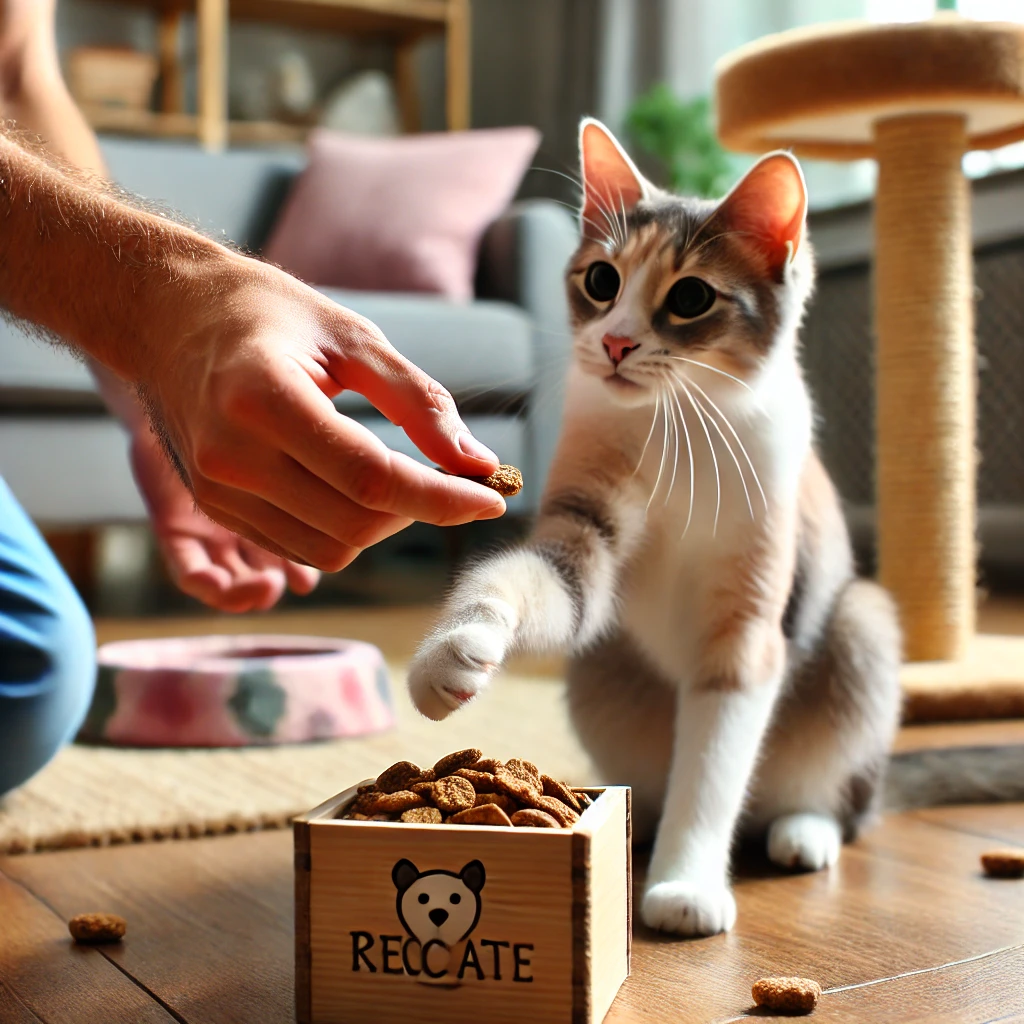Training cats might seem like a challenging task, but with the right approach—and the right treats—you can build positive habits and even teach your cat some fun tricks! Using treats like Cat Temptations, you can motivate your feline friend to follow commands and routines. In this guide, we’ll explore the best methods for training cats using treats and provide some essential tips to ensure success.
Why Use Treats for Cat Training?
Cats are often seen as independent, but they respond well to positive reinforcement when it aligns with their instincts. Treats act as a powerful motivator, reinforcing behaviors you want to see more often. Unlike dogs, cats are more selective, so it’s crucial to choose the best cat treat that captures their attention and enthusiasm.
When selecting treats, consider options that are healthy, palatable, and convenient to use in training. Cat Temptations are a popular choice among pet owners because of their taste and size, making them ideal for training sessions.
1. Cat Temptations: Selecting the Right Treats for Training Success
Choosing the proper treatment is essential to any cat training regimen. Not all treats are created equal, and some might be more effective than others. Here are key factors to keep in mind:
- Taste and Palatability: Cats are famously picky. Choose treats your cat loves, like Cat Temptations, which are designed to be irresistible.
- Size and Texture: Small treats are easier to use in training. Look for treats that don’t require your cat to spend too much time chewing, as quick reward delivery keeps training sessions smooth.
- Nutritional Value: Opt for treats with minimal fillers and artificial additives. The best cat treat is one that provides some dietary benefits while still being enticing.
- Health Needs: If your cat has dietary restrictions or health concerns, choose treats that cater to those needs, such as grain-free or low-calorie options.
By selecting the proper treats, you’re setting up your training sessions for success from the start.
2. Cat Temptations: Start with Basic Commands
When introducing treats as a training tool, it’s wise to begin with simple commands. Cats are more receptive to training when it’s gradual and consistent. Here are some basic commands to get started:
- Come When Called: Hold the treat close to you and call your cat’s name. Reward them when they come to you. Repeat this over time to build the association.
- Sit: While it might seem dog-like, cats can learn to sit on command. Hold a treat slightly above their head. As they look up, they’ll naturally sit back. Reward them when they do.
- High Five: This trick is both fun and straightforward. Hold a treat at your cat’s paw level and wait for them to “high five” to get it.
Keep sessions short and rewarding with Cat Temptations or other best cat treat options to maintain your cat’s interest.
3. Timing and Consistency Are Key
Training success hinges on timing and consistency. Here’s how to make the most of these elements:
- Immediate Rewards: Reward your cat immediately after they perform the desired behavior. Delays can confuse them about which action is being rewarded.
- Regular Sessions: Keep training sessions short, ideally 5-10 minutes. Cats have short attention spans, and long sessions can lead to frustration.
- Frequent Rewards: During the early stages, reward your cat frequently. As they master the behavior, you can start spacing out the treats.
Consistency reinforces desired behaviors. Aim to train in a quiet environment, free from distractions, to help your cat stay focused.
4. Gradual Transition to Verbal Commands and Gestures
Over time, verbal commands or gestures should be associated with specific actions. This can help your cat respond even when treats aren’t immediately visible. Here’s a step-by-step approach:
- Phase Out the Treat: Once your cat is comfortable with a command, start using the treat only every other time. Gradually reduce treat frequency until your cat responds to the command alone.
- Introduce Hand Signals: Use simple hand gestures along with verbal commands. For instance, a raised hand can signify “sit,” while an outstretched hand can mean “high five.”
- Build a Routine: Cats thrive on routine. Training at the same time every day can help reinforce commands without over-reliance on treats.
By gradually shifting to verbal and gesture-based rewards, you’ll make training more versatile and long-lasting.
5. Overcoming Common Training Challenges with Patience
Training cats isn’t always smooth sailing, and every cat learns at their own pace. Here’s how to overcome some common obstacles:
- Loss of Interest: If your cat seems uninterested, try switching up the treats or shortening the training time. Sometimes, taking a break and resuming later can reignite their interest.
- Distractions: Choose a quiet space and remove any toys or objects that might divert your cat’s attention.
- Slow Progress: Cats are naturally independent, so training might take longer than it would with other pets. Remain patient, stay consistent, and celebrate small wins.
Patience is key in overcoming these challenges. Every positive action, no matter how small, is progress in the training journey.
FAQs
Here are some frequently asked questions about using treats in cat training:
1. How many treats can I give my cat during training?
It’s best to limit treats to no more than 10% of your cat’s daily calorie intake. Break treats into small pieces if you plan a longer training session.
2. What should I do if my cat won’t respond to treats?
Try experimenting with different treats. Some cats might prefer freeze-dried options, while others may respond better to soft or chewy treats. Cat Temptations can be a good option to start with due to their flavor and texture.
3. Can I use treats for behavioral training, like reducing scratching?
Yes, treats can be used to encourage positive behaviors, such as using a scratching post instead of furniture. Reward your cat every time they use the designated scratching area.
4. Are Cat Temptations healthy treats for cats?
Cat Temptations are popular due to their taste and convenient size, but be mindful of the ingredients. While they’re great for training, balance them with a healthy diet to ensure your cat’s overall well-being.
5. How can I tell if my cat is ready to move to advanced commands?
If your cat consistently performs basic commands, they’re likely ready for more advanced tricks. Start introducing commands like “jump” or “spin,” using the same treat-based method for reinforcement.
Conclusion
Training a cat can be a rewarding experience that strengthens your bond with your feline friend. By using Cat Temptations and other options from the best cat treat selection, you can motivate your cat and encourage positive behaviors. Remember, patience, timing, and consistency are key to achieving success in cat training. Approach each session with a sense of fun, and your cat will likely respond with enthusiasm!
With these tips and tricks, you’re well-equipped to start a productive and enjoyable training routine with your cat. Happy training!









